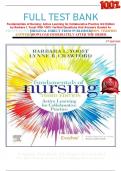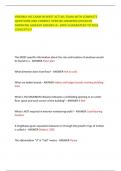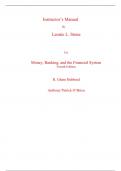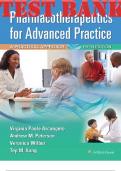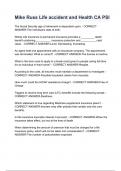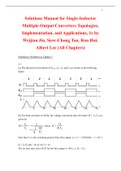Exam (elaborations)
FULL TEST BANK Fundamentals of Nursing: Active Learning for Collaborative Practice 3rd Edition by Barbara L Yoost With 100% Verified Questions And Answers Graded A+
FULL TEST BANK Fundamentals of Nursing: Active Learning for Collaborative Practice 3rd Edition by Barbara L Yoost With 100% Verified Questions And Answers Graded A+
[Show more]
